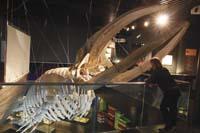The Aquarium of San Sebastian, seen from within
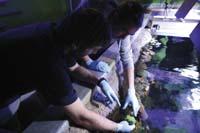
The San Sebastian Aquarium is not the largest in the world, but it is a maritime museum with 300,000 visitors annually. In addition, in December 2008 it has opened new facilities. The visit to the Aquarium lasts approximately two hours, with a route of almost two kilometers. But the size of an aquarium is not just what the visitor sees. In this part not visible by the visitor there are, on the one hand, places for research work and, on the other, places for the proper treatment of sick animals.
As part of the research, some species grow in the Aquarium itself. One of them is the Gatuarrain, where the eggs are laid, the workers collect them, place them in a small aquarium, controlling the temperature and oxygen levels, and in this situation the fish are born when they break the eggs.
However, most fish are harder to grow. The typical species of Cantabrian crops are also not easily cultivated in the Aquarium. Gilds, for example, grow in traditional nurseries for consumption. But at the Aquarium they can't do it because they would need more dedication and a special place.
Hidden tests
However, another goal of the research is to test the fish and aquariums they will exhibit before their exposure to the public. For example, before showing the latest public innovation, they spend months testing.

One of the eleven new aquariums installed has been the mangroves, an aquarium of warm water of 18 meters in length. Due to their large size, they could not supply few species. Approximately 20 species of fish have been included, including bat fish, Caesio fish and others.
The aquarium was assembled in February 2008 and began to be slowly introduced in March. The objective was not only to prove whether each species could survive or not, but also to analyze the relationships between species. It is essential to follow the interaction between species that live in an aquarium. In the case of the mangroves of the Aquarium, the result has been satisfactory, so they have been able to visualize this new aquarium.
Available for quarantine
In daily maintenance, one of the functions of technicians is the control of harmful microorganisms present in water. They treat water with ultraviolet light to kill bacteria. It is then filtered and introduced into the aquariums. However, this does not always guarantee the entry of parasites, so sometimes fish get sick.

When this happens, the sick specimens quarantine where they are not visible. Inside the Aquarium facilities there are fifteen large aquariums and several small ones where fish treatments are performed.
However, fish tracking is not only carried out in hidden facilities. Sometimes, the species that are in sight of visitors are also often surprising.
One of those surprises occurred in the large oceanarium of the Aquarium, a large aquarium with a tunnel. There are more than forty species, most of the Cantabrian. Until a few years ago, among them were the chapters, very spectacular fish, which had to be removed. The size and conditions of the aquarium were not suitable for them, so they had to suspend the show.
In these cases the ethical part has strength when making decisions. In the words of Xabier Lasaga, head of marketing for the Aquarium: "I, from the marketing point of view, would bring many sharks, terrible turtles, etc. But, at least in that sense, we must take care of the ethical aspect. For example, with turtles; in the Aquarium of San Sebastian we have small turtles because we follow a philosophy. These turtles come to us in winter, mostly with infections or after falling into the fishing nets. And we at the Aquarium have seven/eight months. Then we go to La Rochelle, where we mark and release. In short, that is our philosophy: to carry out research and conservation work, and to create a small consciousness in people."
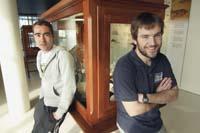
New species
However, most species of the Aquarium are not sick or arrive after falling into the fishing nets. They usually arrive at the aquariums through exchange or sale.
There is a great relationship between aquariums from all over Spain and with the French. Donostiarras have at their disposal fish from the Cantabrian; when another aquarium wants or needs these species, offers other species and creates the possibility to exchange fish.
Those responsible for the Aquarium of San Sebastian maintain a close relationship with the Biarritz Aquarium. From there, for example, they brought the third shark, during their stay at works in Biarritz. These benefits are common among aquariums.
However, it is necessary to trade fish. This is the most common system for obtaining new species and there is a large market for aquariums.

The most expensive fish are tropical. In Europe, the Netherlands are the main suppliers. Tropical fish grow right there, where those responsible for the San Sebastian Aquarium buy them. For example, they have bought many tropical species for the last renovation. The most expensive have not been fish, but nautilus. It is not usual for the nautilus to be seen in the aquariums, which have been exhibited in the last aquarium of the visit to the Aquarium of San Sebastian as a special show to finish the visit.
They have also brought many other tropical fish, such as the famous clown fish, beef, pencil, etc.
Trips to Donostia
And sometimes it's harder than buying fish. Put them in plastic bags and fill two or three quarters of the bag with water. It is important not to feed the fish during the trip. Otherwise, if they defend themselves after eating, they can die by eating. The trip is done by plane, as they must arrive at the Aquarium in a single day. On the other hand, although it seems contradictory, they must bring the fish slowly so that they do not break out. Tropical fish transport is therefore a very complex activity.
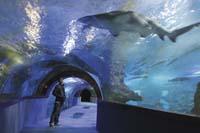
Nor was it easy to bring sharks. They cannot stand still. Therefore, they were brought in special tanks, constantly moving water by pumps. The water enters through the mouth of the shark and leaves the gills and, breathing this way, it is necessary to have such a system in transport. Add oxygen to the water, as the shark's breath is constantly consumed.
Fishermen Help
The Aquarium of San Sebastian also receives the help of fishermen to supply the fish of the Cantabrian. One of them, Jokin Bidasagasti, works especially for the Aquarium. Includes grills, brunettes, sea bass, golden, etc. of the Cantabrian. Depending on the season take some fish or others. "In spring, for example, it's a good time to hunt sepias," says Julen Etxeberria, a biologist at the Aquarium. But it also captures according to the needs of the Aquarium. If a fish is missing, you are asked to go and find it.
They are also related to other fishermen. When they find something special they take him to the Aquarium. "Once, for example, they brought some African red crackers. They did not want to use them for fishing, so some specimens brought them to the Aquiarium," explains Etxeberria. However, such contributions are not common.
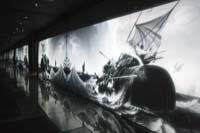
However, the Aquarium is closely related to the port of San Sebastian. It is there, of course, and they have had many years of relationship. Now, in their last renovation, they wanted to pay a small tribute to the port and its fishermen and other workers. Therefore, they have reserved a space in the exhibition.
The Aquarium of San Sebastian is growing, not only in the visible part for the visitor, but also in the not visible. Twenty-six workers, nine of them biologists, work to improve a museum on the sea. There it is, for almost a century, at the end of the port of San Sebastian. Waiting for visitors.
